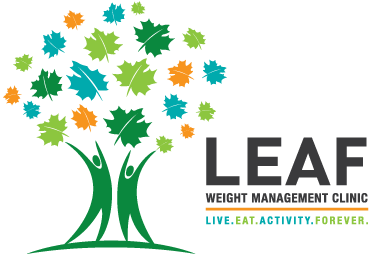Meal Replacements: fewer decisions, more success
How many food decisions have you already made today? Two, five, fifty? We make a multitude of food decisions every day and it can become quickly overwhelming. Helping you to reduce the number of food decisions you have to make is just one of the reasons that using a partial meal replacement approach can help you stay on track with your medical nutrition therapy and achieve success.
What do we mean when we say ‘partial meal replacement’ approach?
This is an eating plan where a specially formulated shake or bar takes the place of one or two meals in your day. The balance of your nutrition is provided in addition to the meal replacement in a meal (or two) and snack(s) to ensure you are meeting your total energy and nutrient needs for the day. For example, you might have a shake meal replacement at breakfast, a balanced lunch and supper with a planned afternoon snack. At LEAF, in our ROOT program, you may choose to have your Registered Dietitian personalize a meal pattern which integrates the use of a meal replacement in your overall weight management strategy.
Here are a few reasons why a meal replacement strategy can work:
ensures your meal contains important nutrients (like quality protein & healthy fats) to fuel you
delivers important vitamins and minerals that other reduced energy approaches may be missing
provides a quick often portable solution, when you might otherwise skip a meal
provides a nourishing alternative when only high calorie, low nutrient options are available
ensures you meal is portion controlled
often improves ability to follow through on the planned meals of the day having preserved your ability to make decisions at fewer meals
Meal replacements are most commonly available in the form of shakes or bars however may also be supplied as pre-portioned meals either fresh or frozen.
What should you look for when choosing a meal replacement? As with choosing other foods for your eating plan, check the nutrition label and look for a meal replacement to provide the following per serving:
200 to 300 Calories
35% of Calories (or less) from fat
10 g protein minimum (15 g or more preferred)
10 g sugar maximum
a source of fibre
25% Daily Value or more for vitamins and minerals
A common protein source in meal replacements is whey, a dairy derived protein known for its ability to increase our satiety or feeling of fullness. Concerned for lactose content? Many, if not most, whey-based shakes are low in or free of lactose. If you are looking for a non-dairy shake however, look for soy or pea protein as your main ingredients.
Meal replacements are available over the counter in drug and grocery stores. These commercial products are for use only as partial meal replacement. Optifast 900 is available by prescription from your weight management physician. Optifast 900 can be used as a partial meal replacement. Please see our important note below regarding full meal replacement programs.
We’ve included some suggestions of meal replacements that closely match these criteria. This is not an endorsement of these particular commercial products and we acknowledge that there may be additional products out there that equally suit these criteria and your taste preference. This is a list that, in part, has been developed based on our clients’ preferences.
Important Note: Commercial meal replacements should NOT be used as your sole source of nutrition. Full meal replacement programs (where Optifast 900 is the main source of nutrition) are only available in medically supervised programs. Do not attempt a full meal replacement approach to weight loss unless you are in a supervised program designed for this purpose under the care of your weight management physician.
If you are interested in such an approach, read more about our STREAM Program.

